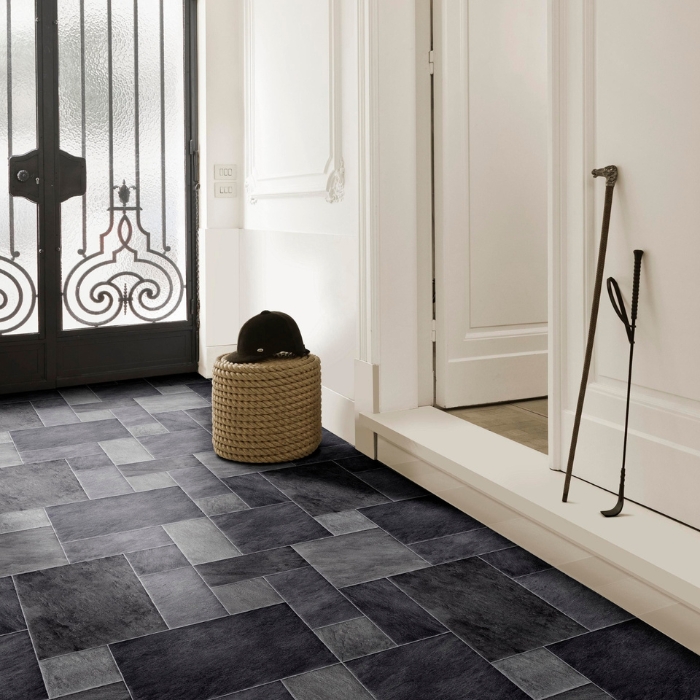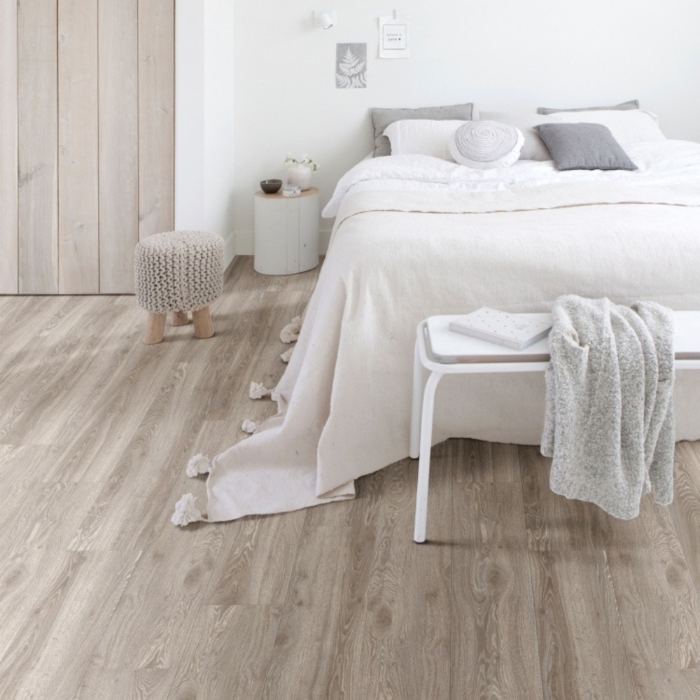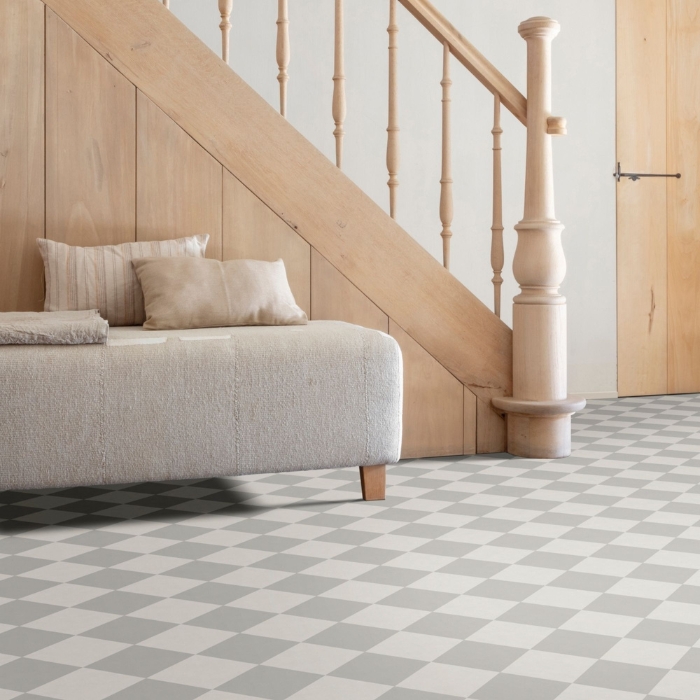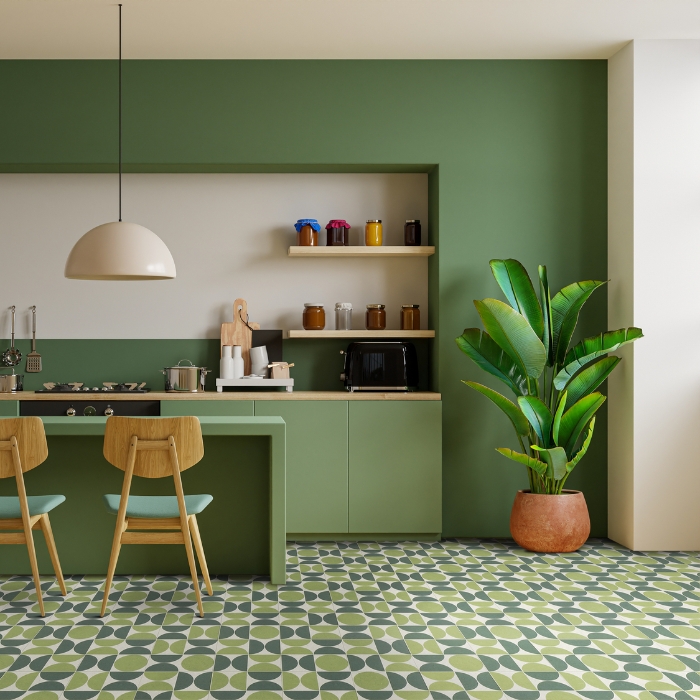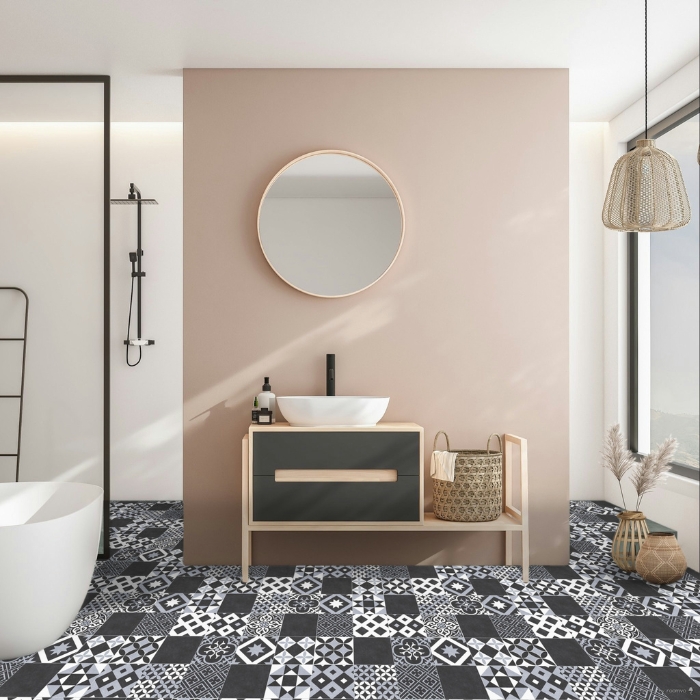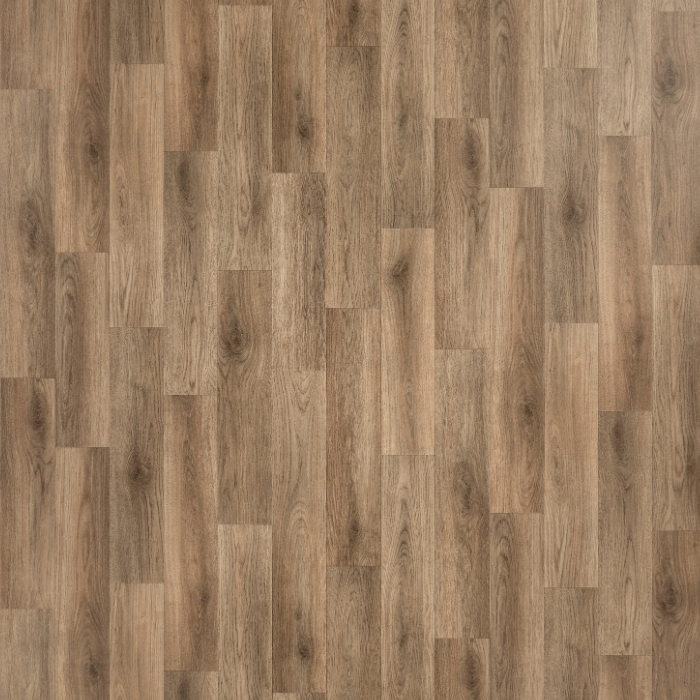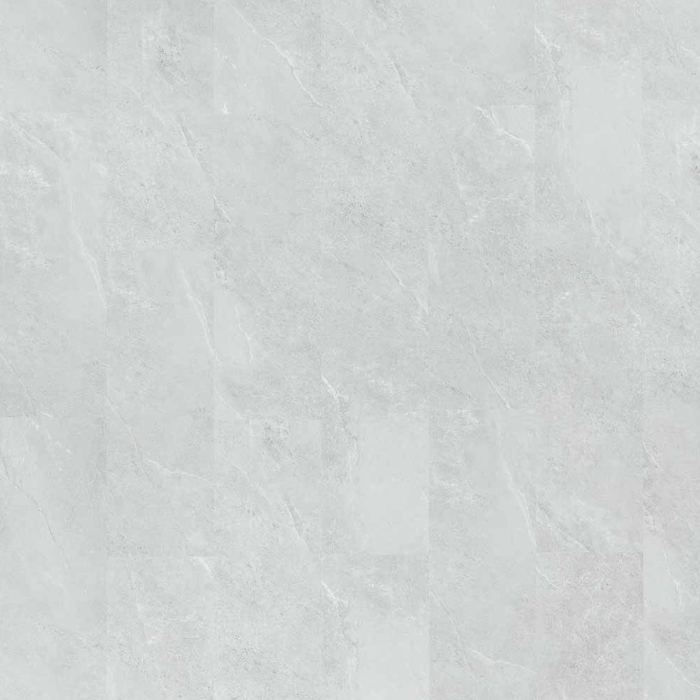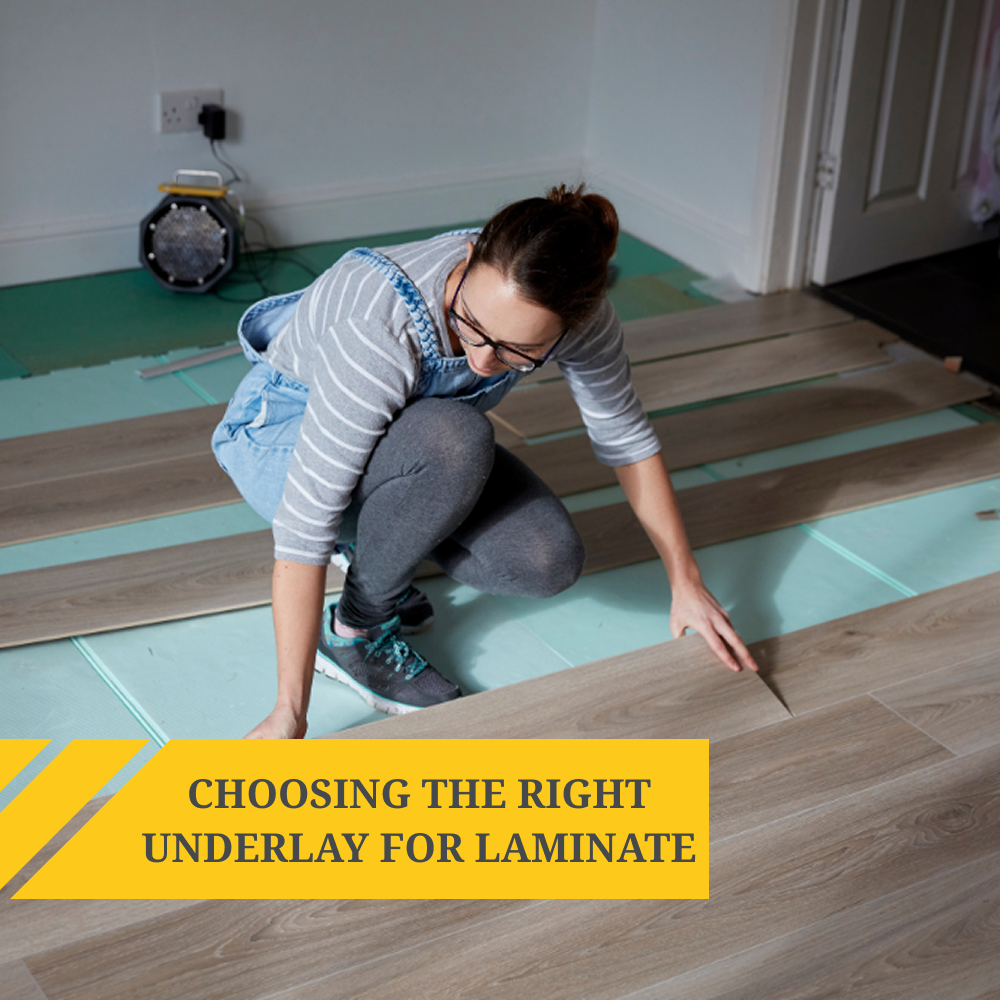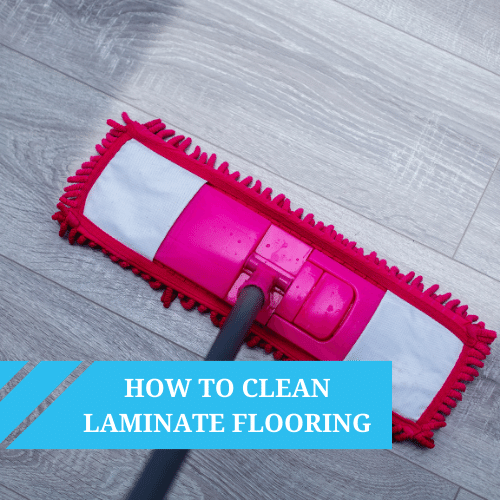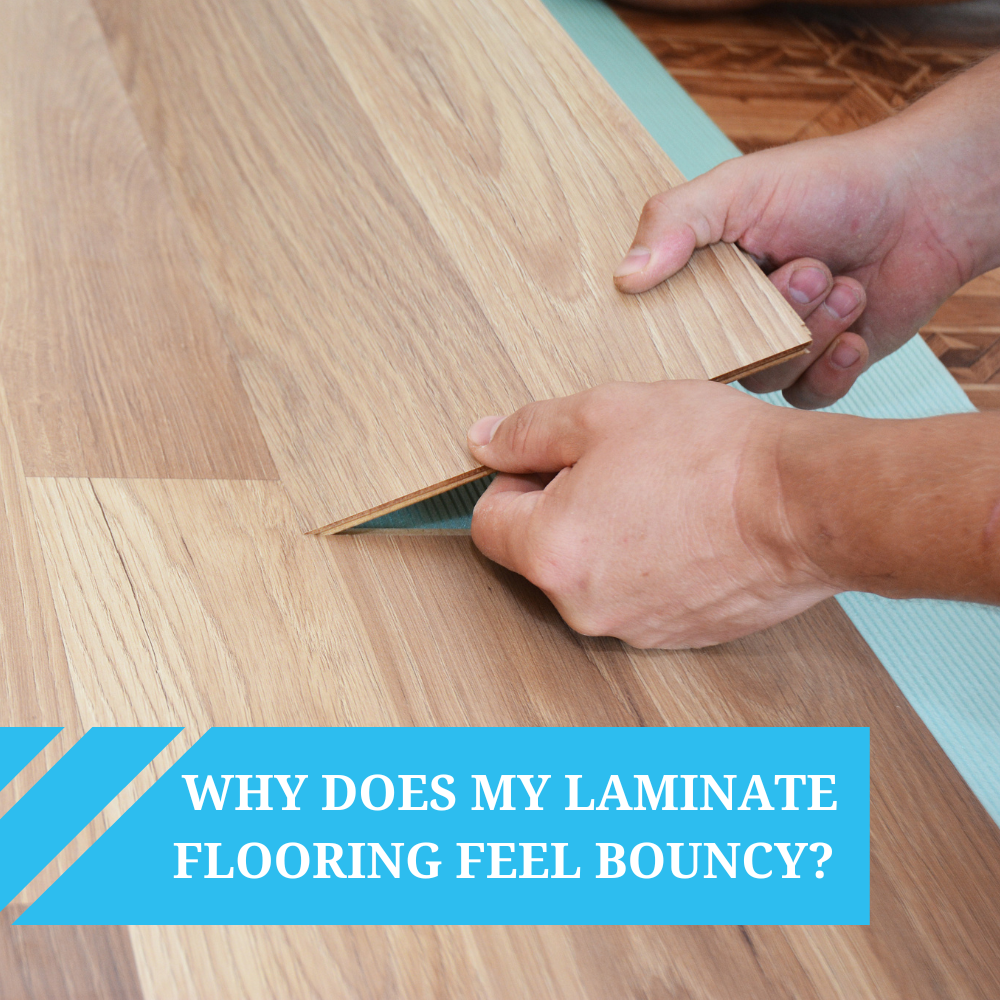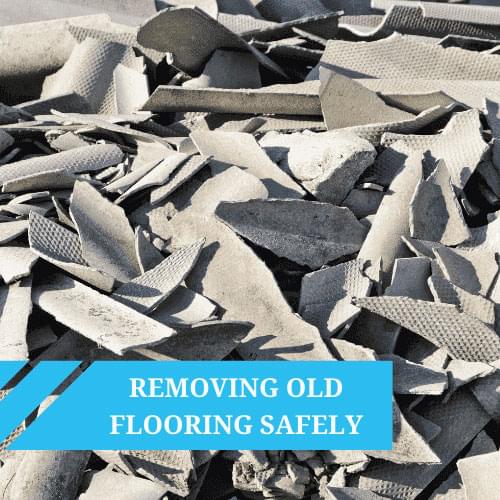If you're wondering, is vinyl flooring good for your home, you're not alone. It’s a go-to choice for many homeowners, offering the perfect blend of style, durability, and affordability. But does that mean it’s right for you?
Vinyl flooring has come a long way from the flimsy, outdated sheets of the past. Today, you’ll find luxury vinyl tile (LVT) and vinyl sheet flooring in designs so realistic they can fool even the most die-hard hardwood fan. Whether you want a sleek stone effect, a warm wood finish, or bold patterned tiles, there’s a vinyl option to match your vision.
But before you jump in, let’s get real—every flooring type has its strengths and weaknesses. In this guide, we’ll break down the key benefits and drawbacks so you can decide whether vinyl flooring is the best fit for your home.
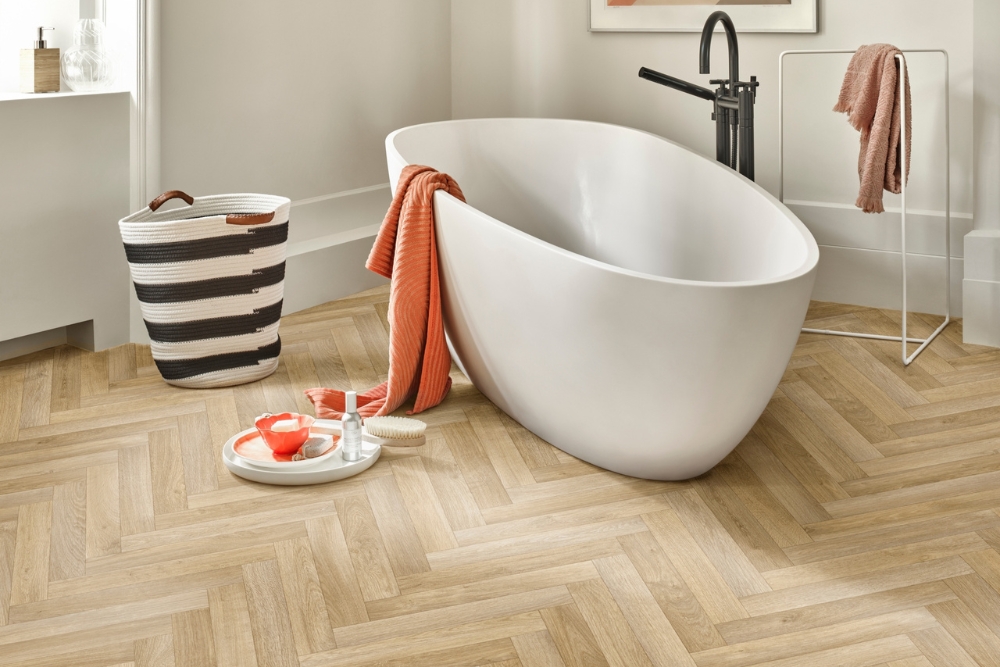

What Is Vinyl Flooring?
Before we get stuck into the nitty-gritty, let’s clear up what we’re talking about when we say vinyl flooring.
Vinyl flooring is a resilient flooring option made from layers of sturdy synthetic materials, designed to replicate natural materials like hardwood and stone—without the hefty price tag or the endless maintenance. It’s durable, stylish, and practical, making it a firm favourite for busy homes.
Before we get into the benefits, here's a quick recap on the main types of vinyl flooring:
- Luxury Vinyl Tiles (LVT): A premium choice that combines strength, durability, and a high-end aesthetic. Whether in vinyl plank flooring or tiles, LVT is designed to mimic the look and feel of natural wood or stone—right down to textured surfaces and realistic grain patterns.
- Cushioned Vinyl Sheet Flooring: A budget-friendly option, sold in large, seamless sheets. It’s easy to install, water-resistant, and often comes with a cushioned backing for extra comfort underfoot.
Both cushioned sheet vinyl and LVT flooring offer a great mix of style and practicality, but which one suits your home best? Let’s weigh up the pros and cons.
What Are the Benefits of Vinyl Flooring?
Vinyl flooring is a go-to choice for busy households, landlords, and anyone who wants stylish flooring without the stress. But what makes it stand out? Let’s start with the design possibilities—because trust us, vinyl has come a long way since those outdated 1970s kitchens.
Quick Navigation:
Design Variety: So Many Styles, You’ll Struggle to Choose
One of the biggest vinyl flooring pros is that it looks far more expensive than it actually is. Want the classic charm of a wooden floor but not the sky-high price or constant upkeep? Done. Dreaming of sleek stone tiles but don’t fancy cold feet every morning? Vinyl’s got you covered.
Thanks to modern luxury embossed vinyl technology, today’s vinyl flooring features are more realistic than ever. Whether your style is understated elegance or bold and eclectic, there’s an option that’ll fit right in. At Best4Flooring, you'll find endless amazing vinyl styles, all designed to bring character and durability to suit every room in your home.
Popular Vinyl Flooring Looks:
- Wood Floor Effect: Think rustic wood plank charm without the worry of scratches, stains, or warping.
- Stone & Marble Effect: A cheaper, warmer alternative to ceramic tiles—because who wants freezing feet in winter?
- Herringbone & Parquet: Want that high-end, Pinterest-worthy feel? This pattern is timeless.
- Patterned Vinyl Collection: Love bold design? Try colourful Moroccan mosaic tiles or vintage Spanish tiles for instant personality.
- Classic Black & White: A nod to period homes—white Victorian tiles or a tiled floor pattern can add serious character.
And if you’re still asking if vinyl flooring is good compared to other options, just look at the price. Our cheapest vinyl flooring starts at under £10 per square metre, meaning you can get the high-end look of wood or stone without the premium price tag.
But let’s be real—flooring isn’t just about aesthetics. Vinyl isn’t just pretty; it’s practical too. Let’s talk durability.
Why Is Vinyl So Tough? It’s All in the Layers
The top layer of any new vinyl floor—known as the wear and tear layer—is what protects against scratches, scuffs, and stains. The thicker this layer, the longer your floor will last.
A good quality luxury vinyl floor should last 10 to 20 years, and some premium brands even offer warranties extending to 25 years or more for residential use.
What Impacts the Lifespan of Vinyl Flooring?
Several factors determine how long your flooring investment will hold up:
| Factor | Why It Matters |
|---|---|
| Quality of Material | A cheap vinyl flooring choice might not last as long as luxury vinyl, so investing in the best vinyl flooring within your budget pays off. |
| Wear Layer | The protective top layer can range from 0.1mm to 0.7mm—the thicker it is, the more durable your flooring will be. |
| Traffic & Use | Homes with heavy foot traffic, kids, or pets will see flooring wear out faster than quieter households. |
| Maintenance | Following the manufacturer’s cleaning and care recommendations will extend the lifespan of your floors significantly. |
| Installation Matters | If you install vinyl flooring incorrectly (or skip crucial prep steps), you could end up with lifting edges, bubbling, or separating seams—all things that shorten the life of your floor. |
Both vinyl and laminate flooring are popular choices for modern homes, but they perform differently in certain conditions. While laminate flooring offers a sturdy and stylish option, some laminate can sometimes experience bubbling, lifting, or separating if exposed to excessive moisture. Vinyl floors, on the other hand, offer a flexible floor covering with built-in water resistance, making them a great choice for bathrooms and kitchens.
So, if you’re after a hard-wearing, water-resistant, and affordable flooring choice, is vinyl flooring good? Absolutely—especially if you want a stylish yet practical alternative to a tiled or wooden floor.
Vinyl Flooring Installation: Can DIY or Professional?
| Vinyl Type | DIY-Friendly? | Best For | When to Hire a Pro |
|---|---|---|---|
| Click LVT (Luxury Vinyl Tile) | Yes | DIYers, small & medium spaces | Not usually needed unless subfloor prep is complex |
| Sheet Vinyl (Small Spaces) | Yes | Bathrooms, utility rooms | Only if cutting/fitting is difficult |
| Glue-Down LVT | No | Large areas, commercial spaces | Requires precise adhesive application |
| Sheet Vinyl (Large Spaces) | No | Open-plan areas, high-traffic zones | Seam matching & professional fitting needed |
Easy to Clean and Maintain
One of the most helpful vinyl flooring pros is just how easy it is to maintain. Unlike hardwood flooring, which requires regular polishing, or some types of laminate floors, which can be damaged by excess moisture, vinyl is a low-maintenance dream.
Its water resistance makes it remarkably tolerant of splashes and spills, making it a practical choice for high-traffic areas like the kitchen, bathroom, or utility room. That said, while vinyl flooring is water-resistant, it’s still best to wipe up spills quickly and avoid using too much water when mopping—excess moisture can seep into seams and affect the subfloor.
How to Clean Vinyl Flooring
Keeping your vinyl flooring looking fresh couldn’t be simpler:
- A quick sweep or vacuum removes dust and debris.
- A damp mop with mild detergent is all you need for deeper cleaning—a little water goes a long way!
- Avoid harsh chemicals or abrasives—they can damage the protective layer and even void your warranty.
Check out our helpful guides for more advice:
How to Clean Sheet Vinyl Flooring
Vinyl vs. Laminate: Which One’s Easier to Look After?
If you’re comparing vinyl flooring to laminate flooring, here’s what you need to know:
- Vinyl flooring is more water-resistant. Unlike laminate flooring, which can experience laminate flooring bubbling if exposed to excessive moisture, vinyl holds up better in damp environments.
- It can be harder to repair laminate flooring—if a plank lifts, separates, or bubbles, you’ll often need to remove the entire floor up to that section to replace it. The same applies to click vinyl flooring, as the planks lock together. In contrast, glued-down LVT allows you to swap out individual vinyl tiles without disturbing the rest of the floor, making repairs much easier. Sheet vinyl, however, usually requires replacing a whole section if damaged.
- Both are easy to clean—but vinyl is more forgiving. If you're wondering 'why does my laminate floor feel spongy', it might indicate water damage, whereas vinyl generally doesn’t have this issue.
Affordability: High-End Looks Without the High Price
Let’s be honest—renovating a home isn’t cheap. But if you want stylish, durable flooring without wiping out your savings, vinyl is one of the smartest choices.
With vinyl flooring, you can get the look of real wood, stone, or ceramic for a fraction of the cost. And the savings don’t stop there—vinyl’s water resistance and low maintenance mean fewer repairs, no expensive treatments, and no stress over spills.
If you're on a tight budget, our cheapest vinyl flooring starts at under £10 per square metre—proof that you don’t need a luxury budget to get a luxury look. You might be surprised, but even our LVT range starts at less than £20 per square metre, enjoy!
Considerations When Choosing Vinyl Flooring
While vinyl flooring offers plenty of benefits, it’s important to consider a few key factors before installation. One of the most important? Your subfloor.
Subfloor Requirements: Getting the Foundation Right
For the best results when you install vinyl flooring, your subfloor must be:
- Clean – Free from dust, debris, and old adhesive.
- Level & Smooth – Imperfections can show through thinner vinyl.
- Dry – Moisture trapped underneath can cause mould, warping, or adhesive failure.
- Structurally Sound – No rot, instability, or soft coverings like carpet.
If your subfloor is uneven or damaged, it can lead to lifting edges, bubbling, or a shorter lifespan—so it’s worth preparing it properly before laying down your new floor.
Is Vinyl Flooring Suitable for Underfloor Heating?
Good news—most vinyl flooring works beautifully with underfloor heating, so you can enjoy warm toes and stylish floors at the same time. But before you go ahead, there are a few things to keep in mind:
- Watch the Temperature: Vinyl can soften under extreme heat, so your system should never exceed 27°C (80°F)—check your flooring manufacturer’s guidelines.
- Proper Installation is Key: The subfloor and heating system must be evenly installed to prevent hot spots that could cause damage.
- Check Compatibility: Not all vinyl flooring types are the same. Luxury vinyl tiles (LVT) and high-quality vinyl sheets are usually underfloor heating-friendly, but always confirm with both your flooring and heating system manufacturer before installation.
Get it right, and you’ll have the perfect mix of warmth, comfort, and style.
Other Considerations
- Heavy Loads: Vinyl flooring can dent under heavy furniture. Use furniture pads or rugs to prevent damage.
- Sunlight Exposure: Direct sunlight can cause fading. Opt for UV-protected vinyl or use blinds and rugs in bright rooms.
- VOCs (Volatile Organic Compounds): All Best4Flooring vinyl products are low-VOC and FloorScore certified, meaning they meet strict safety standards. Some lower-quality vinyl on the market may release VOCs when first installed, but this is not the case with Best4Flooring's range.
- Installation Costs: Prices depend on the type of vinyl and the prep work involved. Click vinyl is DIY-friendly, while glued LVT usually requires professional installation. Sheet vinyl is easy to install in smaller rooms but may need a pro for larger spaces or complex layouts.
What are the Disadvantages of Vinyl Flooring?
Vinyl flooring, acclaimed for its cost-effectiveness and versatility, does have a few drawbacks:
| Disadvantage | Details |
|---|---|
| Prone to Damage | Can be scratched by sharp objects or develop indentations under heavy furniture. Use furniture pads or rugs for protection. |
| Not the Greenest Option | Vinyl is not biodegradable, and some types may emit volatile organic compounds (VOCs)—though Best4Flooring’s vinyl is low-VOC and safe. |
| Sunlight Exposure | Direct sunlight can cause fading or discolouration over time. UV-resistant vinyl or window coverings can help prevent this. |
| Can Be Difficult to Remove | Glued-down vinyl can be challenging to remove or replace, but is definitely possible with the right tools and a bit of patience. |
| Lower Resale Value | Unlike natural flooring options like wood or stone, some vinyl may not add as much value when selling a property. |
Conclusion: Is Vinyl Flooring Right for You?
Vinyl flooring offers a winning combination of style, durability, and affordability. With endless design choices, low maintenance, and water resistance, it’s a practical choice for busy homes. Whether you need a hard-wearing floor for high-traffic areas, a pet-friendly option, or a budget-friendly alternative to wood or stone, vinyl has you covered.
That said, it’s worth considering subfloor requirements, heavy furniture, and sunlight exposure before making a final decision. If you’re after a cost-effective, stylish, and resilient floor, vinyl could be the perfect fit.
Explore More Flooring Inspiration
From modern art deco tiles to vintage ceramic tiles and classic tiled floors, there’s a vinyl style for every space. Browse our full range or ask one of our friendly team to find the best vinyl flooring options for your home.
Looking for more? Don't forget to check out our related blog posts for more inspiration and tips on embracing vinyl flooring in your home design.
Vinyl Flooring FAQs
Can you install vinyl flooring yourself?
Yes! Click LVT and cushioned vinyl in small spaces are DIY-friendly, making them great options for home projects. Click LVT locks together without glue, while sheet vinyl can be cut and laid easily in bathrooms or utility rooms.
For larger areas, glue-down LVT and full-room cushioned vinyl require precise fitting and adhesive application, making professional installation the better choice. Need help deciding? Check out our guide on LVT Click vs Glue Down.
Is vinyl flooring good for pets?
Yes! Vinyl flooring is a great choice for pet owners because it’s scratch-resistant, water-resistant, and easy to clean. Unlike real tiles, which can be slippery for pets, vinyl provides better grip underfoot. For added durability, choose LVT with a thick wear layer.
Is vinyl flooring good for high-traffic areas?
Absolutely. Vinyl floors handle heavy foot traffic well, making them perfect for hallways, kitchens, and living rooms. Just look for high-quality options with a strong wear and tear layer.
Is vinyl flooring good for bathrooms?
Yes! Vinyl sheet flooring and LVT flooring are water-resistant, meaning they can handle splashes and spills far better than most laminate or hardwood flooring.
Want to know more? Ask us your vinyl flooring questions—we're happy to help!






